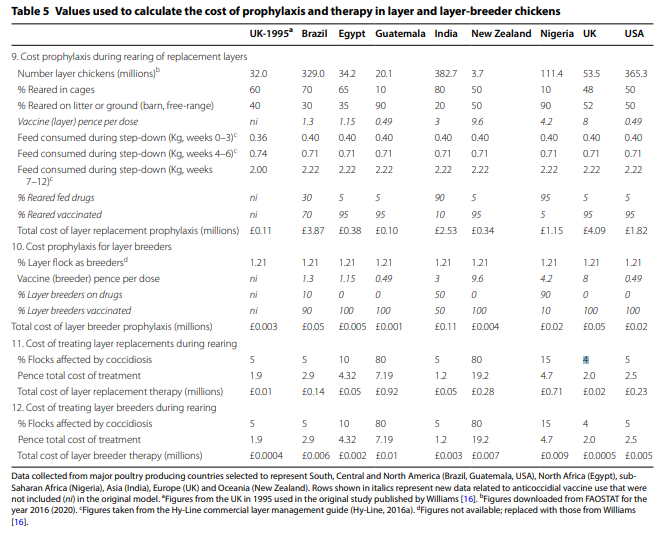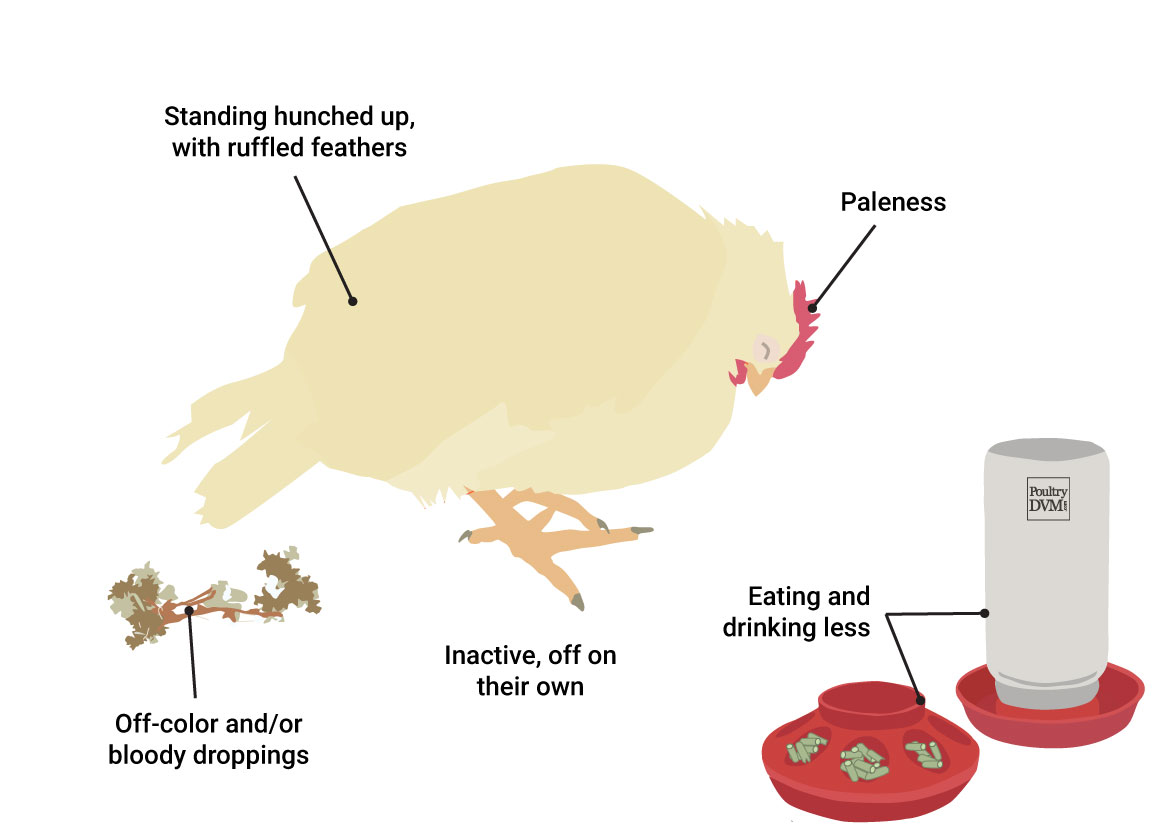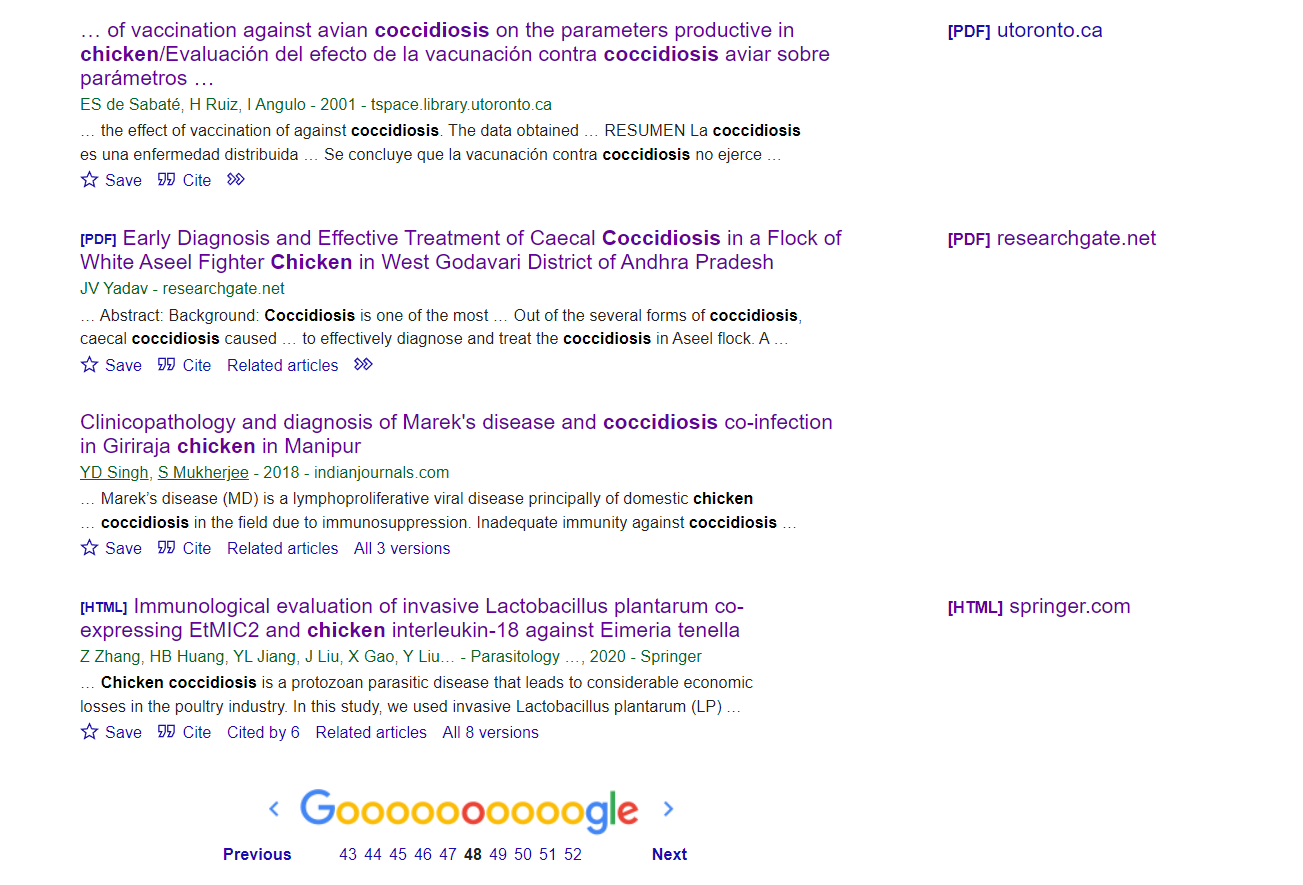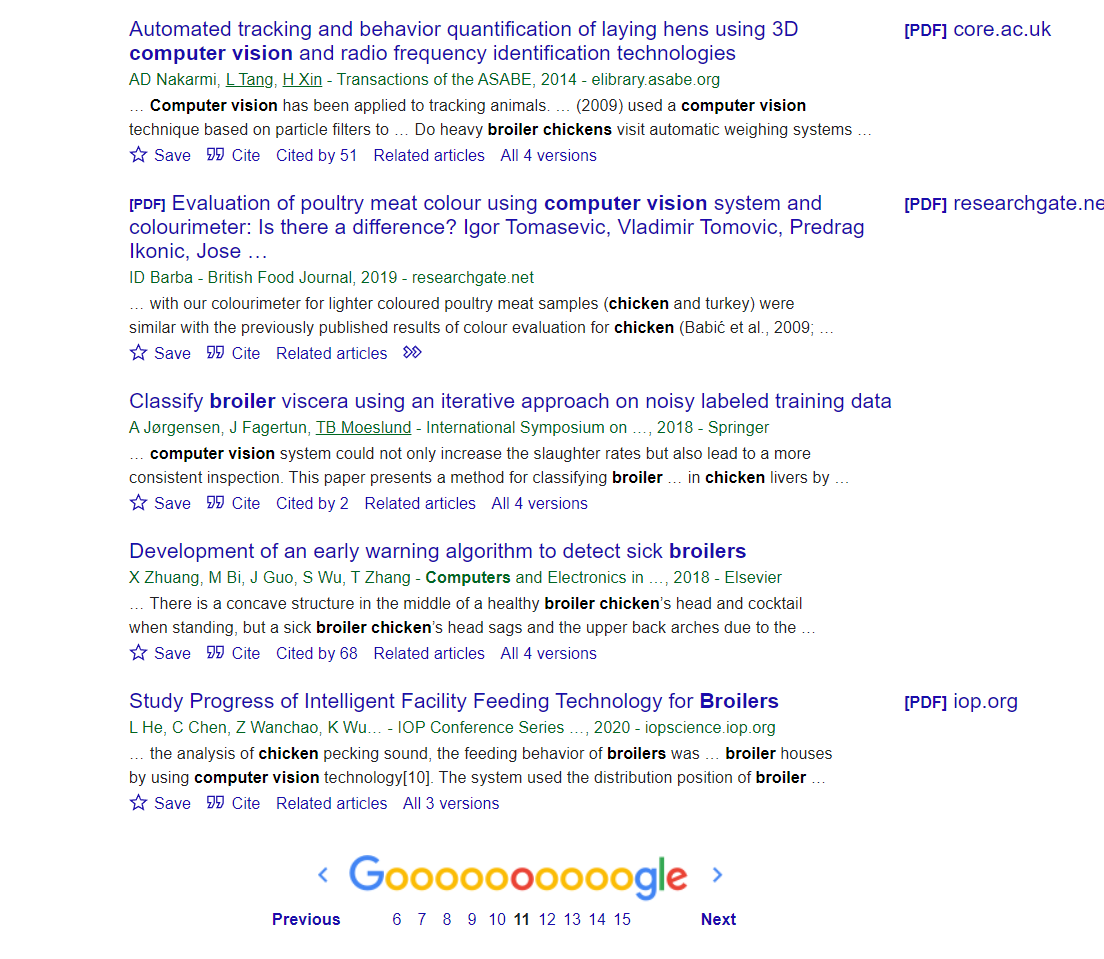Outlining the problem
More than 68 billion chickens were farmed in 2018, representing a third of all meat produced globally in addition to 1.38 trillion eggs for human consumption.[1] It's probably not a controversial take to say that Chickens share of the global non-human animal suffering is the biggest of any land animal. Any welfare improvements to farm chickens would probably effect massive numbers of individuals, even if just on a country by country basis.
There is a common disease in chickens called Coccidiosis. The cost of Coccidiosis in chicken farming in the UK using 2016 prices is £0.16/ chicken produced.[2] There is a financial interest to try to get rid of the disease from farm's supply because it costs them money to have to cull chickens prior to slaughter age because of waste. Coccidiosis is also bad for broiler/egg laying chicken welfare because they suffer and die from a parasitic infection before "normal" slaughter age.
“Our survey suggested that approximately 2% of UK broilers would be expected to die or (more commonly) be culled in a house affected by coccidiosis. Thus, if 31.5 million broilers were in houses affected by coccidiosis, mortality would have been 630,000. Note, the figure does not include losses due to subsequent mortality caused by other opportunistic pathogens.”[2]
In 2016 in the UK at least 95% of egg laying chickens received live anticoccidial vaccination. The average cost of an anticoccidial vaccine was 8p per dose in the UK in 2016. If 95% of laying hens received vaccines, the total cost would have been £4.06 million. [2]

As you can see from the table above, despite an effective and cheap vaccine the disease is still a source of pain in the industry. And in countries which don’t have a strong take up of the vaccine, the percentage of affected flocks is even higher.
How AI could potentially help
Luckily, the disease Coccidiosis has quite visible symptoms, as seen from the image below: [3]
[3]
[Redacted, see comments].
Uncertainties
Would spotting Coccidiosis early significantly reduce the risk/damage of an outbreak?
It’s unclear, but some websites seem to indicate that if it's spotted early then it can be treated easier. However farms are more likely to cull than treat according to the study[2]. But this could just be because by the time the farms notice chickens are sick those chickens are too far gone. Further investigation is probably needed here in reaching out and talking to farmers.
Blockers to potential work / the outcome being useful
- [Redacted, see comments]
- It's possible the footage from said cameras would be too poor quality for the AI to gain any information from it.
- Chicken farms might be against having cameras in their farm
Next steps
I have some experience in writing [redacted] and would be able to take a crack at creating some type of algorithm for it on my own. However, after googling I realise I have no method of collecting the training data required to test this out. So for the time being the idea is stuck.
Which sucks because I think this idea strikes a rare alignment of being both good for animal welfare and farmers profits (and food security too actually).
If anyone thinks this is a good idea and would like to help in some way or have connections to chicken farms who could potentially supply training data for the algorithm that would be amazing. If anyone wants to grab this idea and investigate it on their own that would be great too.
Feedback about whether this is in fact a good idea is very welcome.



I might see one of your main points now. It might be "The grand parent comment dramatically understates how much the industry actively works on/crowds out related profit maximizing research."
I actually addressed this too, I said, in point three of my original comment, that it's likely that they will discover this intervention. And yes there are a lot of machine vision related projects on chicken factory farming, and therefore I think it's most likely just a matter time they discover this specific issue of coccidiosis being able to be solved by machine vision. There I also described my concern: speeding it up might also affects the alt-protein industry.
I understand where you are coming from. I am personally trying to realize a humane slaughter project. Which itself has the risk of helping the industry. I can reduce a big part of the risk by having the discussions offline. Now that Max and I got connected we can actually talk about the idea offline. But I am yet to be convinced to be not concerned about having all these online.
Also, I think I have some other ideas that don't have such risks and could be good use of Max's time. I will post them in another comment. But let me say one example and use it to illustrate why these ideas might be better.
Low oxygen level is a major welfare problem in aquaculture (fish and crustaceans). For fish, when they are low on oxygen, their mouths rise above the water more often and it can be seen. The difficulty for humans is that it's hard to see, and even if they can see it they cannot count the frequency because they can't stand they looking all day. This is where training a machine learning algorithm helps. And the reason I believe this is okay to say on the forum is because of the different math of the impact. Coccidiosis affect only ~5% of flocks, and for these affected flocks 2% of chickens die. But Max's proposed intervention will reduce the cost of medications/vaccines for 100% of the chickens that are in the factory farms that uses Max's proposal. But the situation is different for dissolved oxygen. When you see a few fish's mouths, it's likely that the whole population of fish is suffering from low oxygen. So the propotion of "short-term" benefits is much higher that we might have more confidence that it might even outweight the longterm concerns.